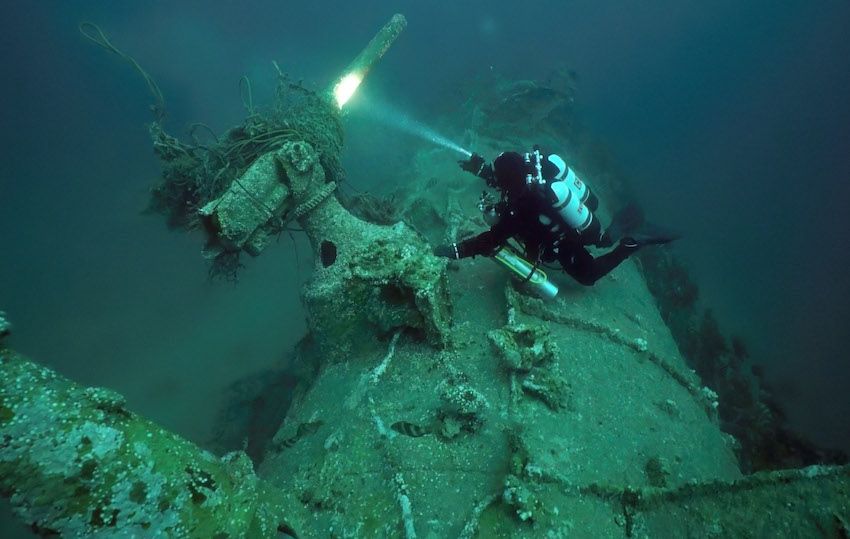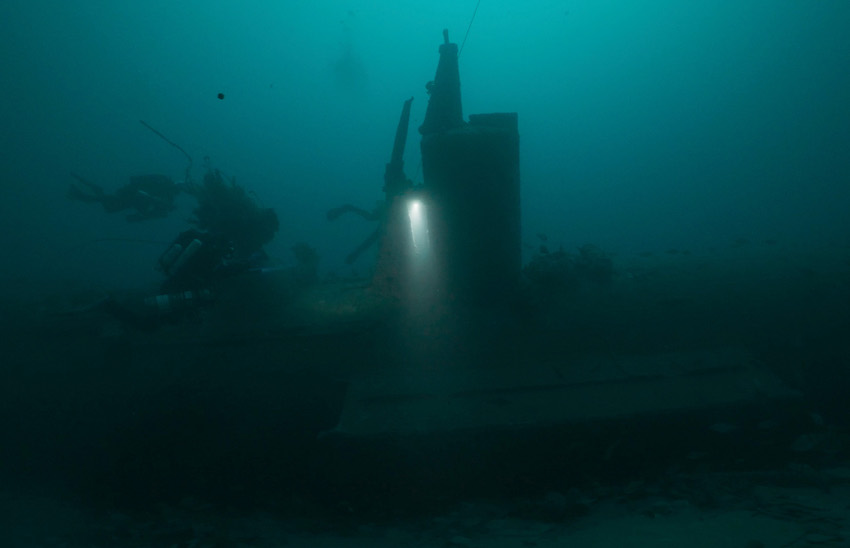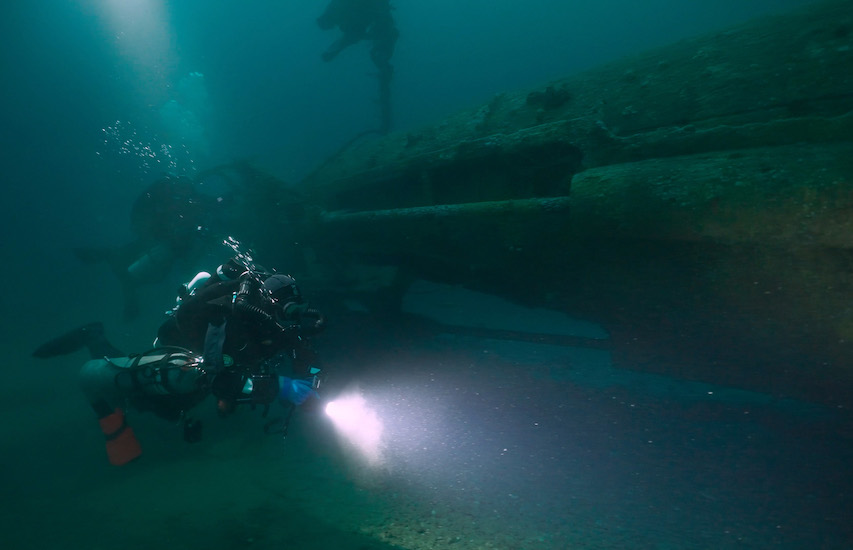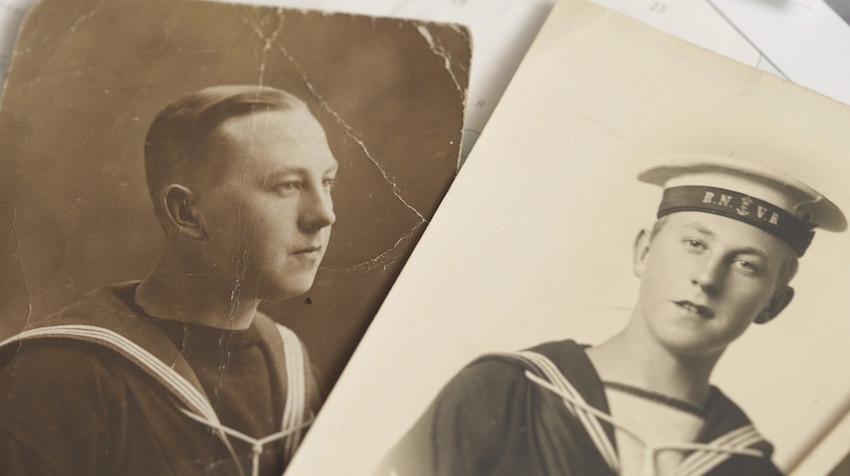


A once in a lifetime discovery of a missing German U-boat by a team of Guernsey divers will help settle decades of uncertainty.
Historians had contested the accuracy of where the WWI battle between UC-18 and Royal Navy ‘Q’ ship The Lady Olive had taken place, and even whether The Lady OIive had actually sunk UC-18.
UC-18 went down with the loss of all 28 submariners on board on 19 February 1917, while all of Lady Olive's crew survived.
It is the only known battle where a navy ship and a submarine have sunk each other.
It took the team four years to finally find the resting place of the submarine, about 40 miles west of her supposed position, with leads from fishermen and direct accounts from the survivors and where they were rescued from key to unravelling the mystery.

Pictured: UC-18 showing the remains of the Conning Tower which was struck by fire from Lady Olive.
The entire project was filmed for a documentary which is set for broadcast on the BBC in June.
Director Karl Taylor said he was elated with the project and being able to document it, "the circumstances of the sinking's had been an enduring mystery finally solved," and he hoped that the film would help people realise the sacrifices that all sides made during a very turbulent period of European history.
In the first two years the team discovered the wreck of the Dromore, a small steamer sunk by UC-70 in 1917, 12 miles south of Guernsey, and also the Saint Philippe, a cargo vessel sunk by UB-39 in November 1916.
It was only in the third year of the search that the team discovered the UC-18, along with what they believe to be the Lady Olive nearby.

Pictured: The stern of UC-18 being inspected by Nathan Martel.
The team conducted several research dives on the U-boat at a depth of 75 metres and worked closely with U-Boat expert and marine archeologist Tomas Termote to identify the submarine as UC-18.
They were hampered by the lack of expected identification marks on the props, which had been replaced.
UC-18 was a German Type UCII minelaying submarine, launched on 4 March 1916.

Pictured: A UC class submarine and crew.
In six patrols, she was credited with sinking 35 ships.
Q-ships like Lady Olive were heavily armed merchant decoy vessels, their weapons hidden in an attempt to lure submarines to the surface.
Written crew accounts documented the sinking of UC-18, but there had been doubts.
Large bounty payments for sinking U-boats were used as incentives by the Royal Navy and some argued that UC-18 could have survived and been lost elsewhere.
This theory gained more traction because when some of Lady Olive's crew were picked up by the French destroyer Le Dunois, the French ship was being fired on by a submarine.

Pictured: James Simpson, one of the Lady Olive's crew. He was killed in action a year later on board The Lady Cory-Wright.
Some historians have claimed Lady Olive's crew claimed the bounty fraudulently and initially the payment was withheld by the Admiralty.
The discovery of UC-18 should help answer those disputes.
Mr Termote and the dive team have passed all of their findings and photographic evidence over to the French Maritime Authorities and the German Navy and as it is designated a war grave the French authorities have now closed the location to divers.

Pictured: Three members of the dive team, l-r Chris du Putron, Peter Frankland and Karl Taylor with a memorial plaque.
On the final dive to the site, the Guernsey crew laid a stainless-steel plaque engraved with the names of all 28 crew lost.
There will be a Premiere of the documentary in Guernsey on 15 and 17 April at Beau Sejour Cinema.
Pictured top: Diver Chris du Putron inspects the gun on UC-18.
Comments
Comments on this story express the views of the commentator only, not Bailiwick Publishing. We are unable to guarantee the accuracy of any of those comments.